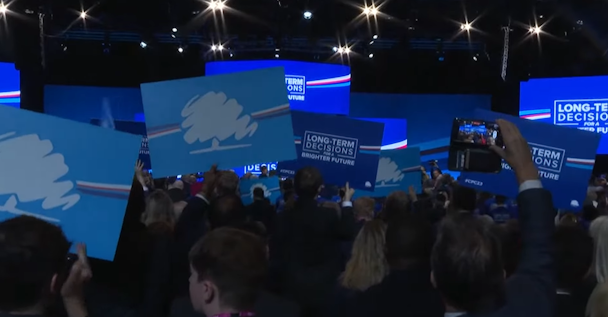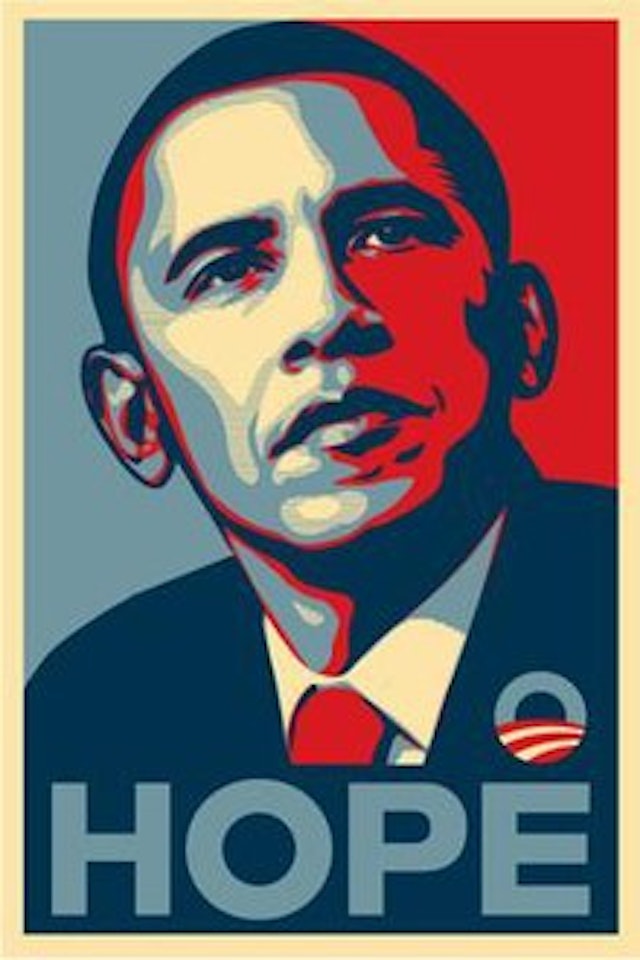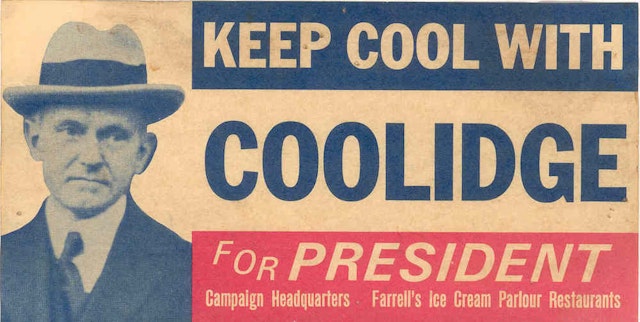The Tory conference proves we need more creative political slogans
Alastair Duncan, founder of the Co-Learn Collective, analyzes Rishi Sunak’s campaign slogan ‘long-term decisions for a brighter future’ and hazards a guess how Labour will respond in the coming weeks.

By deciding to marry the daughter of a billionaire, Prime Minister and Conservative leader Rishi Sunak explained to a packed hall, he’s living proof of a long-term decision that has most definitely given him a bright future.
The creative technique of testimonial (this happened to me, it could happen to you) works in insurance advertising or in health categories where a minor celebrity can explain a complex product. Will it work for Sunak in the run-up to the election? Is there a billionaire out there thinking you’re the one? Statistically, no.
He’s canceled high-speed rail project HS2 (which he said he wouldn’t), rolled back on net zero (which he claims saves you “£5,000 or £10,000 or £15,000”), and his personal story is hardly relatable.
Advertisement
I can see why he’s chosen it. Sunak’s only chance is to distance himself from his predecessors and talk abstractedly about the future. But voters tend to be interested in specifics, like how they will pay the bills this winter. Even the Tory cheerleading Spectator described the campaign line as ‘lifted from a PowerPoint presentation’ and would ‘send people to sleep.’ It was all part of what may be the ‘worst-ever’ conference for the party.
There is no magic bullet for campaign slogans, but it’s fun to analyze what has worked, and using creativity does strengthen a campaign.
It helps, as the American speechwriter William Safire wrote, if slogans have “rhyme, rhythm or alliteration to make them memorable.” They should be easy to say and capable of “rendering discourse extractable,” the strategist’s way of describing an audience chanting back and phrases entering popular culture. People can get behind slogans that have immediate meaning and capture a zeitgeist.
Advertisement
‘Get Brexit Done’ is one example. Originally a throwaway comment made in a focus group, it captured the general frustration and boredom with the endless negotiations on Brexit at the time. It was catchy and highly quotable. ‘Get Brexit Done, invest in the NHS, schools and the police’ - to give the slogan its full length - asserted what research had identified as the key topics of the moment. In 2019, it was somewhat believable.
There’s a trend to trip off-the-tongue triplets. ‘Take back control’ (Vote Leave 2016), ‘Labour isn’t working’ (Conservative 1978) and ‘Yes we can’ (Obama 2008) have used creativity to solve the problem of neatly expressing what people feel.
Not that slogans have to be three words long or original. “Make America Great Again,” adopted wholesale by the Trump campaign, was used in Ronald Reagan’s campaign in 1980 and in Barry Goldwater’s unsuccessful run in 1964.
Optimism carries enormous weight. Labour’s ‘New Labour, New Life for Britain’ worked in 1987, as the nation was tired of 18 years of Conservative rule mired in corruption scandals.
Suggested newsletters for you
Vibrant imagery is super important. Shepard Fairey’s (unofficial and widely spread on emergent social media) block color chiaroscuro posters for Obama’s 2008 campaign with the words ‘Hope’ and ‘Change’ proved to be one of the most successful optimist campaign images of recent years. Art direction made the ‘Labour isn’t working’ poster.

What will Sir Keir Starmer do?
His advisors will be angling for a change message like ‘enough is enough,’ but a more emotional punch in the messaging is needed to make it concise. A belief-led campaign would work well. ‘Believe in Britain’ or ‘Believe in Better’ (previously a great Sky campaign) would go a long way to give a sense of identity to a country where research is telling us nothing works.
Perhaps he can take inspiration from Biden’s new slogan, ‘Together we’ll finish the job.’ Not that Labour is the incumbent, but the idea works by carefully taking the threats of his opposition, such as restricting voting and women’s rights and positioning their ‘freedom’ as a core value. Or take the inclusive view, like ‘In it for you’ (New Zealand Labour 2023) and ‘Avec Vous’ (French President Macron 2022).
Technocrats can have personality. ‘I like Ike’ worked for President Eisenhower (1952) and ‘Keep Cool with Coolidge’ (1924) for the famously taciturn Calvin Coolidge. Or perhaps he’ll be inspired by ‘Happy Days Are Here Again,’ the 1932 campaign for FD Roosevelt, as America dragged itself out of the great depression.

We’ll all have to contend with the misinformation overload that will be the hallmark of the 2024 election and the aggressive style of campaigning we’ve imported from Australia. ‘Stop the boats’ was originally an Australian campaign to offshore immigration centers. ‘Stop the Death Tax’ will surely follow if there’s any move to reform inheritance tax.
Labour’s conference next week will be the first step on the road to an election next year. One thing’s for sure: it’ll need a powerful creative strategy to make a difference.

